VIDEO: How to Make Kokedama | Growing Joy with Maria
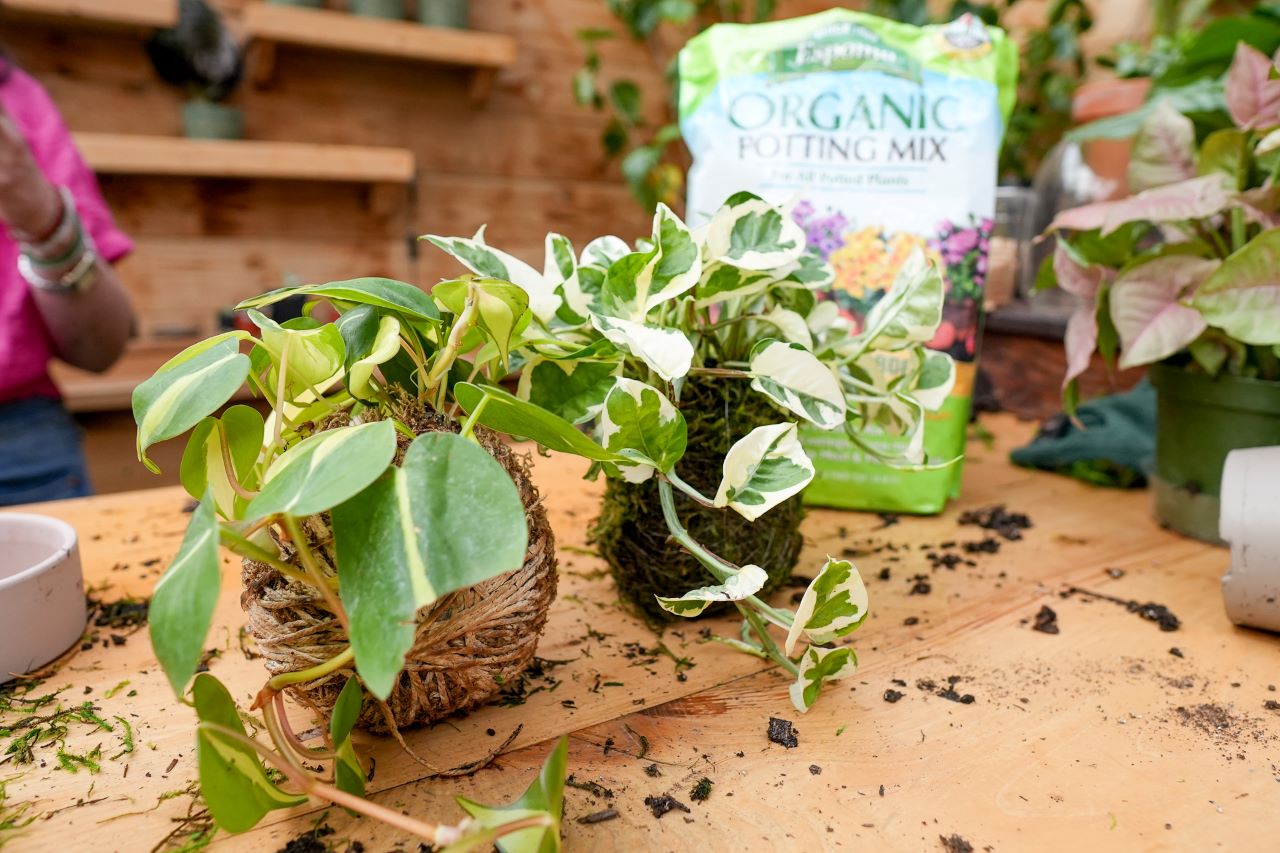

Join Laura from @gardenanswer as she ventures into the greenhouse and guides us through the repotting process of her young geraniums and a stunningly large Kumquat tree. Along the way, Laura shares valuable plant care advice.
For this task, Laura uses Espoma Organic Potting Soil Mix for her geraniums and Cactus Mix for the Kumquat tree, ensuring an optimal growing environment for her plants. To nourish and promote the growth of her green friends, she mixes in Espoma Organic Flower-tone and Citrus-tone to provide the essential nutrients her plants need to flourish.
Featured products:
Succulents are controversial plants in the houseplant community. The trouble with succulents is that they’re often described as “impossible to kill.” This sets up unrealistic expectations—when the inevitable happens and they die, it only reinforces the idea that you’re a failure at plant parenting.
This blog is inspired by Episode 190 of the Growing Joy with Maria Podcast, where host Maria Failla interviewed succulent expert Andrea of Justsuccit.com to give you tips for growing happy, healthy succulents inside your home.
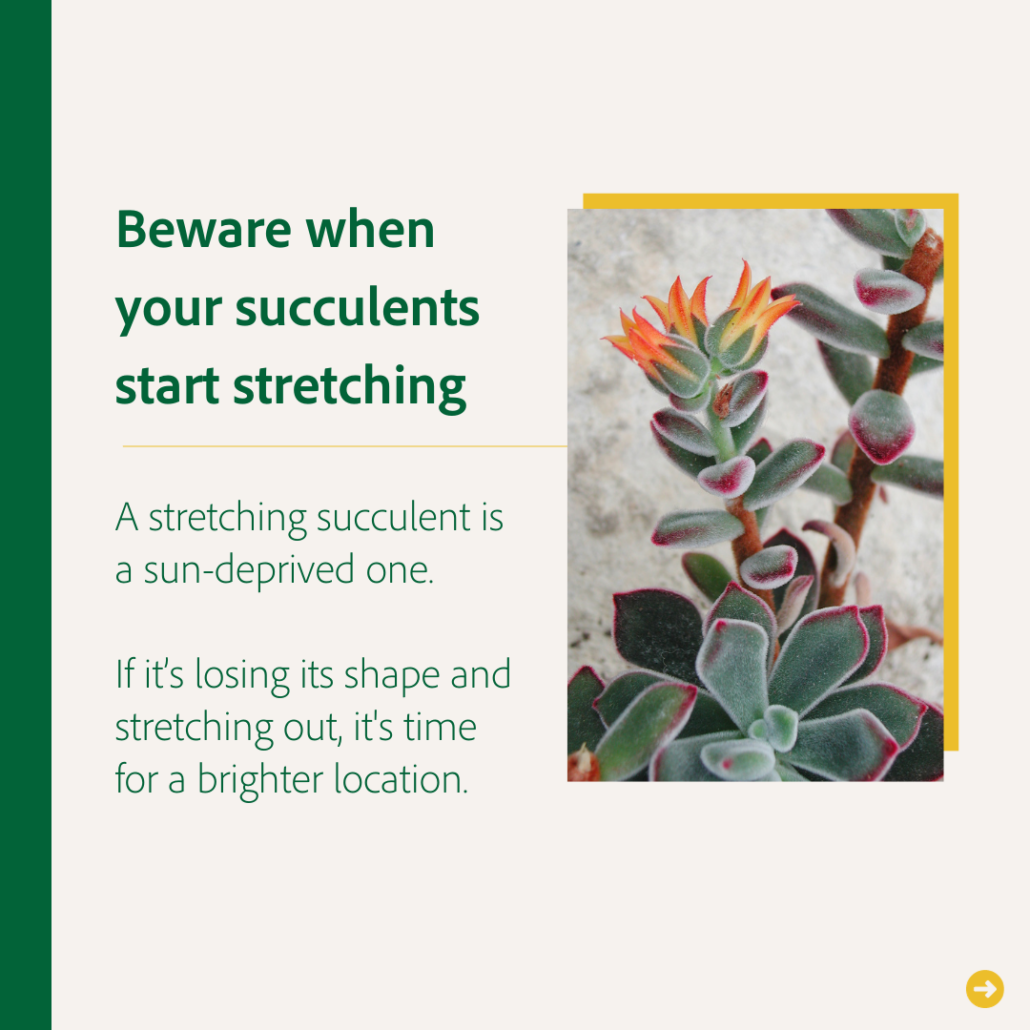
One very common misconception is that when a succulent starts stretching or etiolating, meaning growing leggy and elongated, that it’s happy and thriving. Actually, the opposite is true—stretching is a sign that the desperate succulent is searching for more sunlight!
So why do succulents die? There are three main reasons:
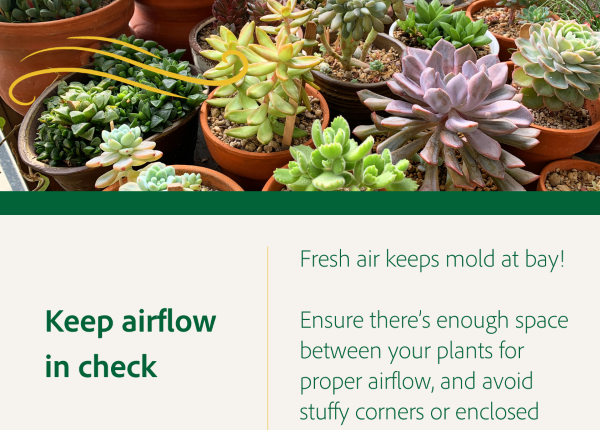
Caring for succulents isn’t extremely complicated, but you do need to get a few key things right.
Before watering, check the soil
When it comes to water, always check the soil moisture first by sticking your finger in the pot. Wait until the soil is completely dry and the plant looks thirsty before watering again. When you do water, give the plant a thorough, deep drink until water drains from the bottom. Then allow the plant to almost fully dry out before repeating.
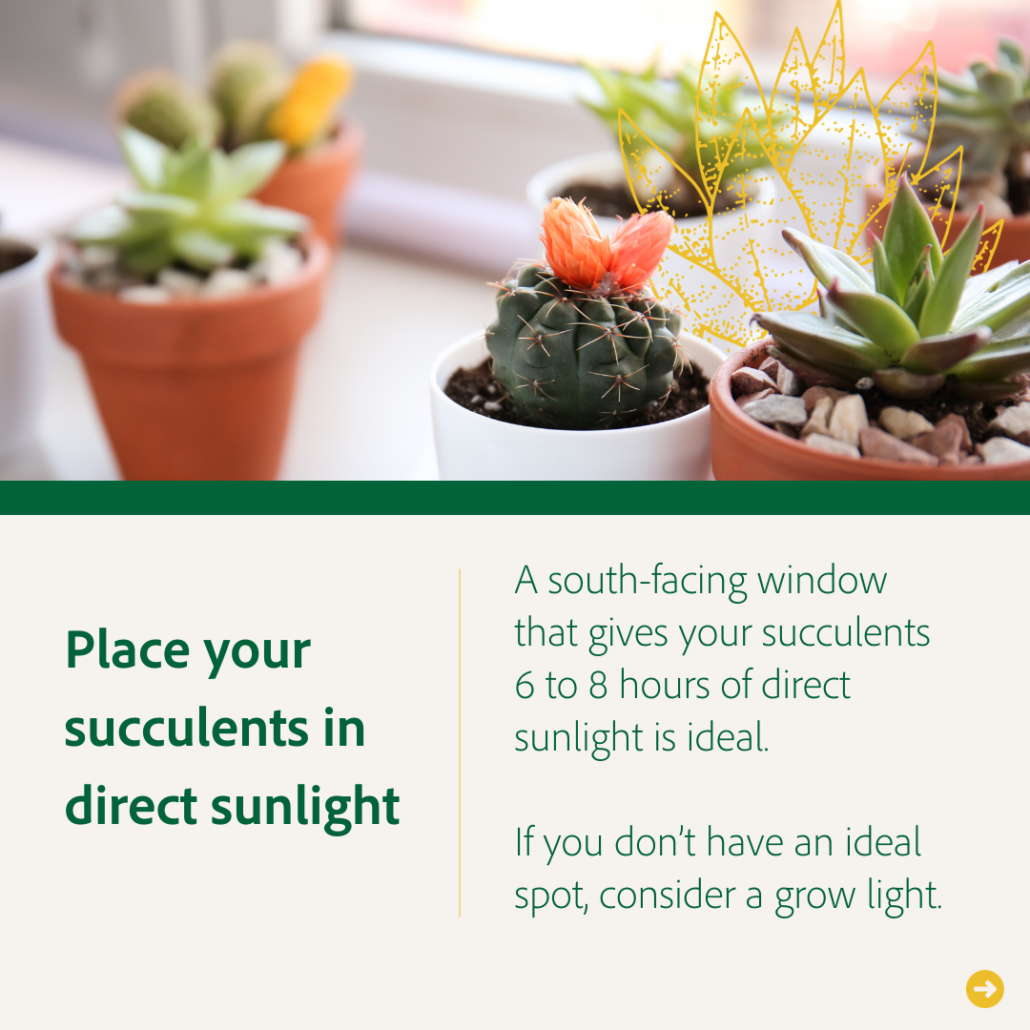
Place your succulents in direct sunlight
Providing adequate sunlight is critical for succulents to maintain their compact shape and vivid colors. Varieties with more intense colors require more light. Outdoor full sun is ideal, but indoors, you’ll need a bright southern-facing window or grow lights.
Place your succulents in fast-draining soil
Succulents require a fast-draining medium like Espoma Organics Cactus Mix to prevent root rot, but you can create your own by amending regular potting soil with perlite, pumice, or bark. One thing—always use containers with drainage holes! Without drainage, you’re just asking for trouble.
Feeding your succulents
While succulents don’t need frequent feeding, giving them a nutritional boost during their growing season can be beneficial. Espoma Organic Cactus! provides essential proteins enhanced with kelp extracts, humic acids, and microbes in a balanced form suitable for indoor succulents.
Succulent Propagation
Propagating succulents is fun and helps them multiply. The easiest method for beginners is leaf propagation.
Carefully twist off fresh leaves with the base still attached. Let the end callus over in a dry spot, then look for baby plantlets or roots emerging as a sign of growth. Once the mother leaf shrivels up, plant the baby in your fast-draining soil and water a bit more frequently than mature plants.
Beginner Friendly vs Advanced Succulents
Some succulents are easier to care for than others. Beginner-friendly plants include:
More challenging “advanced” succulents include:
What have you learned? With some specialized care related to water, sunlight, and soil medium, you can absolutely grow succulents indoors. Understand their needs, make adjustments, and you’ll stop killing them in no time. Be mindful and patient—their adaptations can teach us important life lessons. Open your heart and let your succulents embrace you!
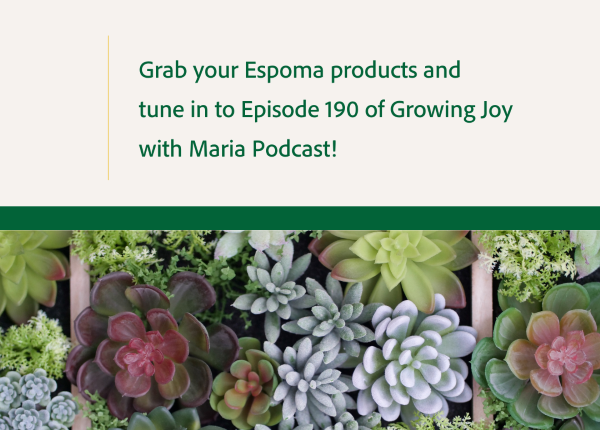
*****
Featured Products:
Brighten your holidays with the stunning Amaryllis! This festive plant is a holiday favorite, adding a splash of color to any indoor setting.
Follow along with Kaleb Wyse of Wyse Guide as he demonstrates how to plant and care for Amaryllis bulbs in containers. Kaleb provides his top tips to help you have amazing blooms over the holidays!
Kaleb uses Espoma Organic Potting Soil Mix to plant his Amaryllis bulbs, providing them with a nutrient-rich environment for optimal growth. He emphasizes the importance of proper watering and temperature to foster vibrant blooms.
Featured Products:
With its glossy leaves and signature holes, Monstera deliciosa (a.k.a. the Swiss Cheese plant), has become the latest Instagram celebrity. Named after the Latin word “monstrous,” these plants’ leaves can grow up to two feet wide! The Monstera is popular among plant parents looking to create an urban jungle in their homes, and despite appearances, aren’t that tricky to care for.
This blog is inspired by Episode 33 of Growing Joy with Maria Podcast, where host Maria Failla interviewed Scott Cain, owner of @tropicaloco on Instagram, to discuss how to keep your Monstera happy and healthy.
Caring for Your Monstera
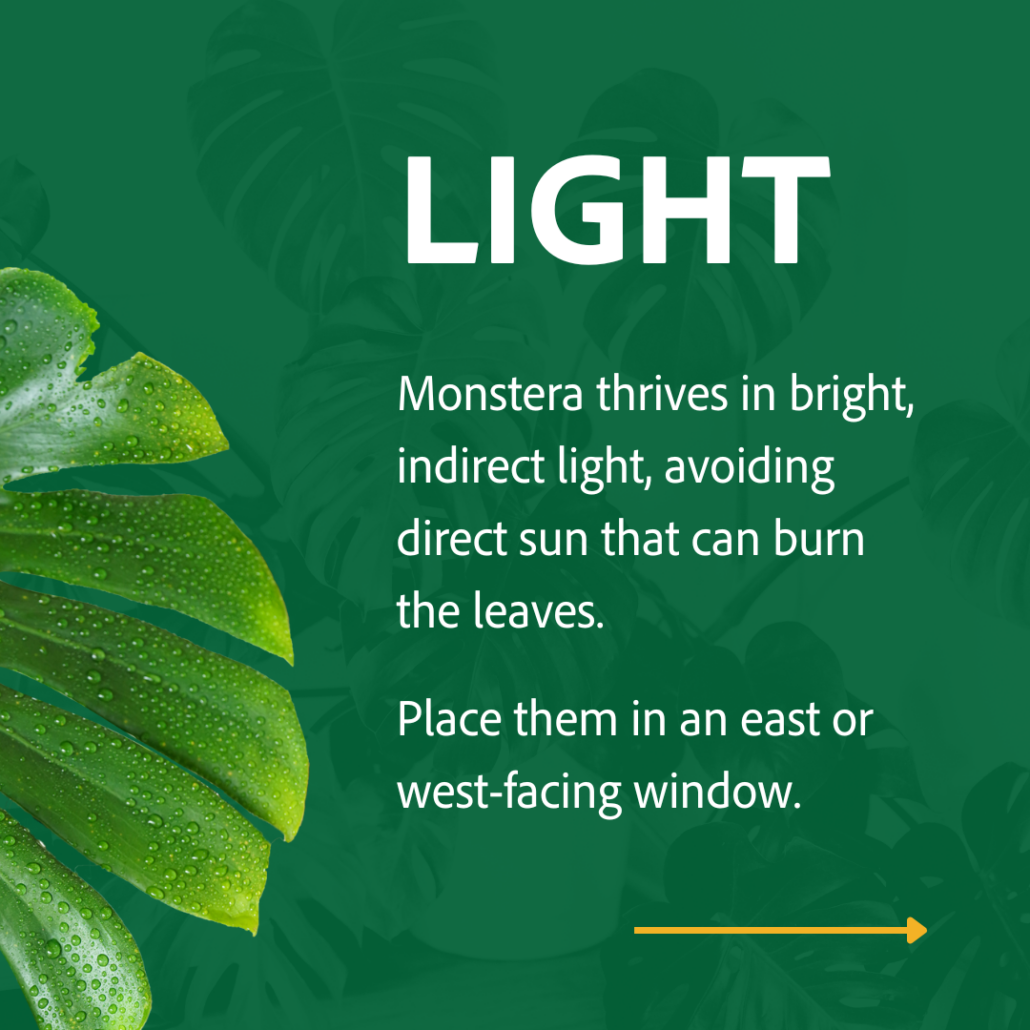
Light
Monsteras thrive in bright, indirect sunlight. Place your Monstera 1-3 feet away from an east-facing or west-facing window where it will receive bright, indirect light throughout the day. Avoid south-facing windows as they can provide harsh, direct sunlight that will scorch the leaves. If your Monstera sits in direct light, keep a close watch to make sure leaves do not burn.

Water
Monstera is a tropical plant that prefers evenly moist (but not soggy) soil. Allow 1-2 inches of the topsoil to dry out between waterings, checking with your finger to be sure there is no residual moisture. According to Scott, it’s better to under-water these plants than over-water them. For assistance in the perfect balance, use an organic potting soil like Espoma Organic Potting Mix to help retain moisture.
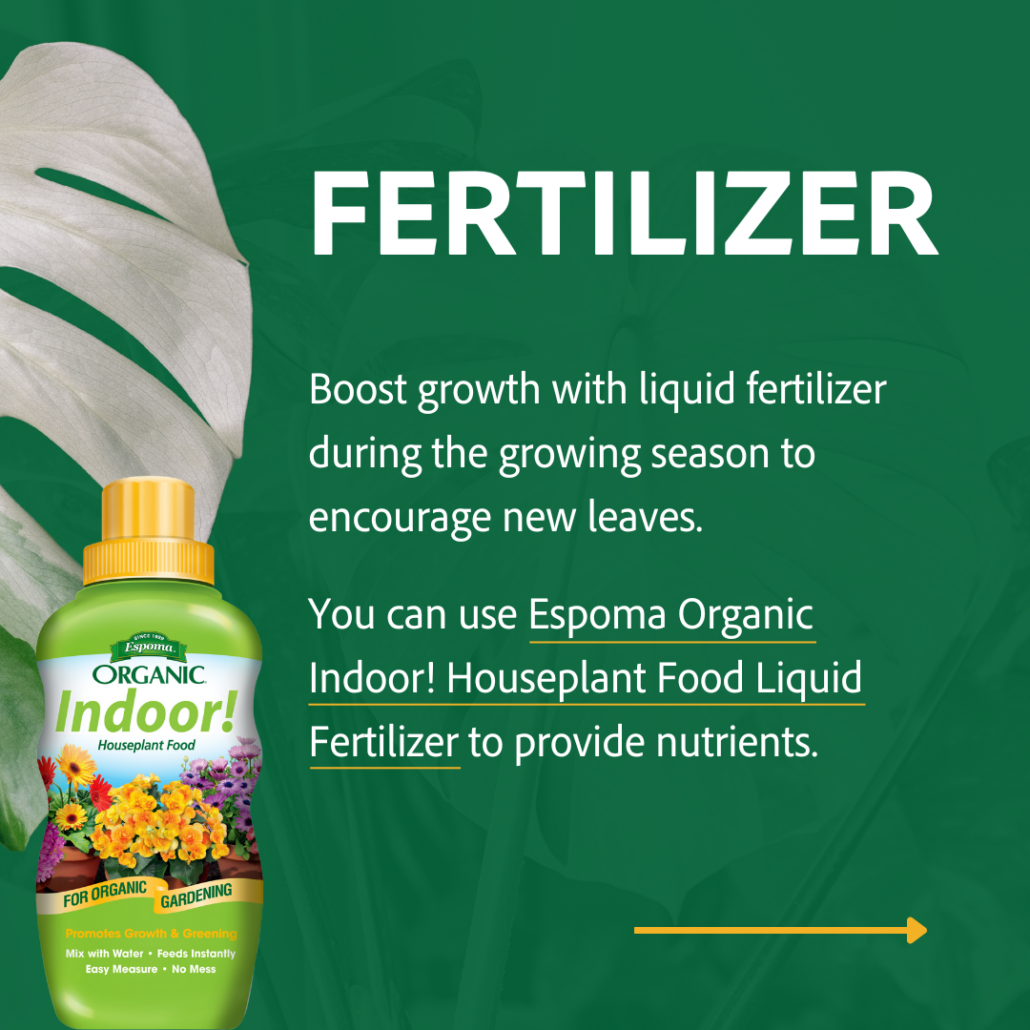
Fertilizer
During the growing season, use a diluted liquid fertilizer to help encourage new growth. Look for options made for tropical foliage plants, such as Espoma Organic Indoor Plant Food!
Cleaning
Over time, Monstera leaves can gather dust that blocks their ability to photosynthesize. Every 1-2 weeks, gently wipe both sides with a damp cloth or paper towel to remove dust. For an occasional, deeper clean, move the plant to a kitchen or bathroom for a gentle shower. Be sure it dries fully before returning to bright light to avoid sunburn.
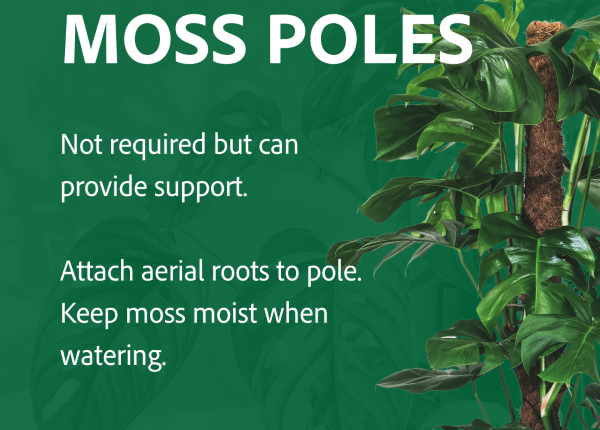
Support
While not always needed, providing a moss pole or other support structure can help train your Monstera’s growth vertically. If aerial roots form, gently tuck them into the moss pole or back into the soil to ensure they do not lose nutrients. For the best moss pole, keep it slightly moist.
Fixing Common Monstera Problems
If your Monstera leaves start to change colors or droop, pinpoint the problem with this troubleshooting guide by Scott:
By observing your plant’s needs and making adjustments accordingly, you can get your Monstera back to its healthy, happy self. Patience and attentiveness are always key!
Different Types of Monstera Plants
There are around 50 species in the Monstera genus, though the types you’re most likely to find for sale include:
Monstera deliciosa: The classic swiss cheese plant, known for its big, heart-shaped leaves. In the wild, it can produce edible fruit.
Monstera adansonii: Also referred to as the swiss cheese vine, due to its smaller oval leaves and growth like a vine.
Monstera borsigiana: Sometimes confused with deliciosa, it has flexible leaves without the ruffled part where they attach to the stems.
Monstera obliqua: Very rare as houseplants. It has lacy leaves with lots of holes and thin leaf strands.
Monstera variegata: A Monstera variety with white variegation on the leaves. Variegated Monstera need more light than non-variegated Monstera.
Caring for your Monstera is simple as long as you stay aware of the right growing conditions. Their interesting shapes and detailed leaves make them gorgeous to plant parents and visitors alike.
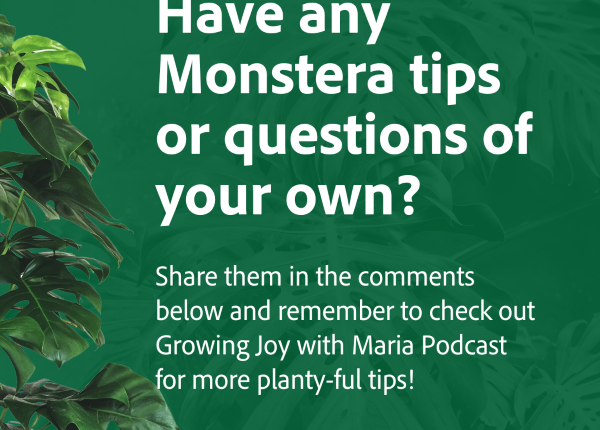
*****
Featured Products:
Looking to add a tropical touch to your patio or indoor space? Dive into Summer Rayne Oakes‘ latest video where she shares her top citrus care tips as she plants a Calamondin orange tree. While this delightful citrus hybrid isn’t naturally suited for colder climates, it flourishes when potted under the right conditions.
For the perfect growing medium, Summer chooses Espoma Organic Potting Soil Mix for her citrus tree. To ensure it receives all the essential nutrients, she incorporates Citrus-tone Organic fertilizer into the pot, setting her new Calamondin orange tree on the path to thrive in its fresh new planter.
Learn more about Summer Rayne Oakes here:
Website: homesteadbrooklyn.com
YouTube: @summerrayneoakes
Facebook: facebook.com/homesteadbrooklyn
Instagram: instagram.com/homesteadbrooklyn
Twitter (X): twitter.com/sroakes
Featured Products:
Join Kaleb Wyse of Wyse Guide as he shares his top tips for overwintering plants that are potted in outdoor containers. Not one to let a pot sit empty, Kaleb demonstrates a fantastic way to repurpose it for the fall season – by crafting a vibrant pumpkin arrangement.
When it comes to the transplant process, Kaleb trusts Espoma Organic Potting Soil Mix to ensure his plants have the best growing medium as they transition indoors for the colder months.
Learn more about Wyse Guide here:
YouTube: https://www.youtube.com/WyseGuide
Facebook: https://www.facebook.com/WyseGuide/
Instagram: https://www.instagram.com/WyseGuide/
Website: https://www.wyseguide.com/
Featured Products:
Looking for a unique way to display your succulents? Let Laura from Garden Answer show you how! Head over to the greenhouse with her as she plants a beautiful succulent arrangement in a head-shaped planter.
For the perfect growing medium, Laura trusts Espoma Organic Cactus Mix. She also recommends feeding her succulents with Espoma Organic Cactus! liquid plant food. This special blend is packed with natural proteins, kelp extracts, humic acids, and a unique combination of beneficial microbes, ensuring your succulents thrive.
Learn more about Garden Answer here:
https://www.youtube.com/c/gardenanswer
https://www.facebook.com/gardenanswer
https://www.instagram.com/gardenanswer/
Featured Products:
Join Summer Rayne Oakes from Homestead Brooklyn as she shares her top tips for rescuing a root-bound Hoya plant.
What’s Summer’s secret? A special blend of Espoma Organic Orchid Mix, Cactus Mix, and Perlite.
Summer feeds her plant with Espoma Organic Grow! Grow! liquid plant food has a balanced 2-2-2 fertilizer analysis which is beneficial for replanting. It has a rich blend of natural proteins enhanced with kelp extracts, humic acids, and beneficial microbes to provide the nutrients your plants need to flourish.
Learn more about Summer Rayne Oakes here:
Website: homesteadbrooklyn.com
YouTube: @summerrayneoakes
Facebook: facebook.com/homesteadbrooklyn
Instagram: instagram.com/homesteadbrooklyn
Twitter (X): twitter.com/sroakes
Featured products:
Orchids have long captivated plant parents with their beautiful flowers and unique growth habits. Despite what others commonly think, taking care of them is not as difficult as their reputation implies. With the right knowledge and approach, you can bring the beauty of orchids right into your home.
This blog is inspired by Episode 30 of Growing Joy with Maria Podcast, where host Maria Failla talks about orchid care with Chris Satch, the NYC Plant Doctor and educator for the New York Botanical Garden.
What is an Orchid?
Botanically, orchids are plants that have a unified column, which is a unique reproductive structure that unites the orchid family. They can adapt to different environments, but most of them do love the tropics—which is why you can find them on every continent except Antarctica.
Orchid Care Basics
Let’s get into the basics of taking care of them:
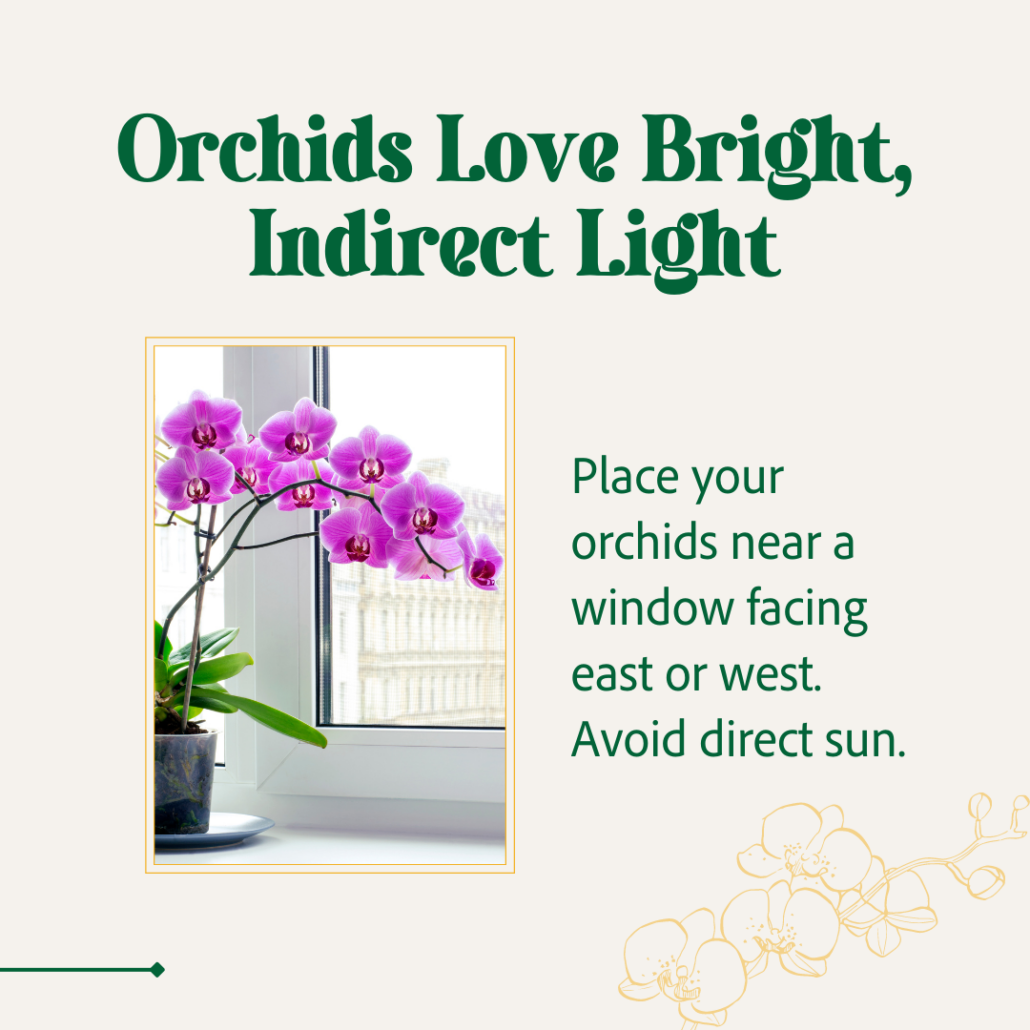
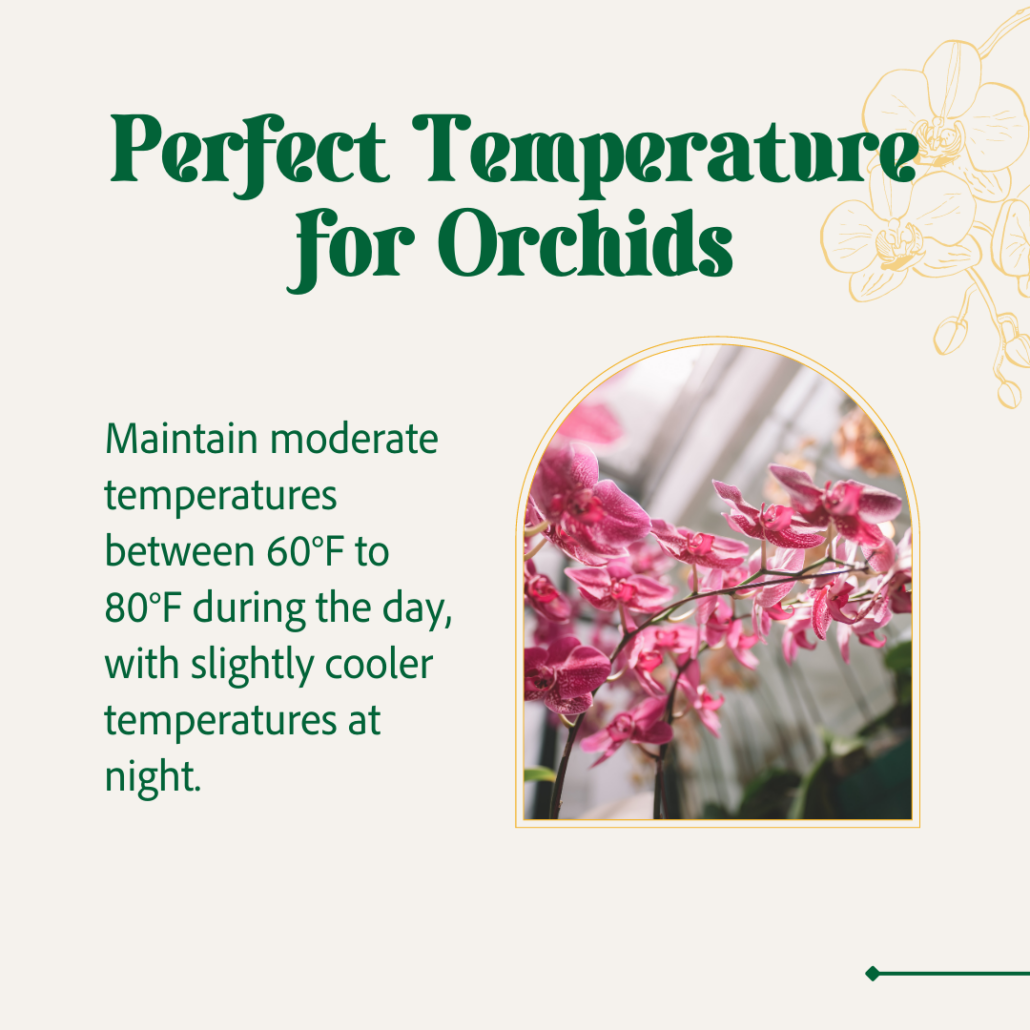
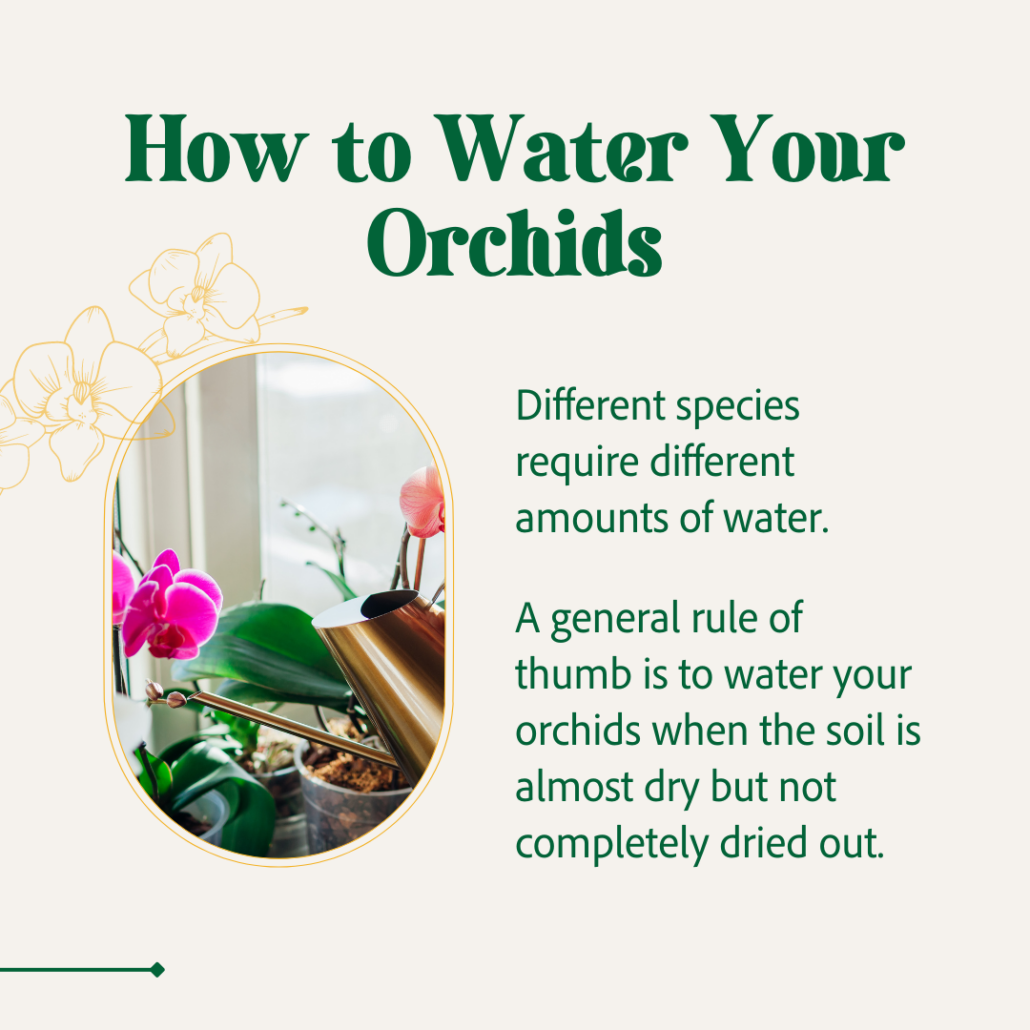
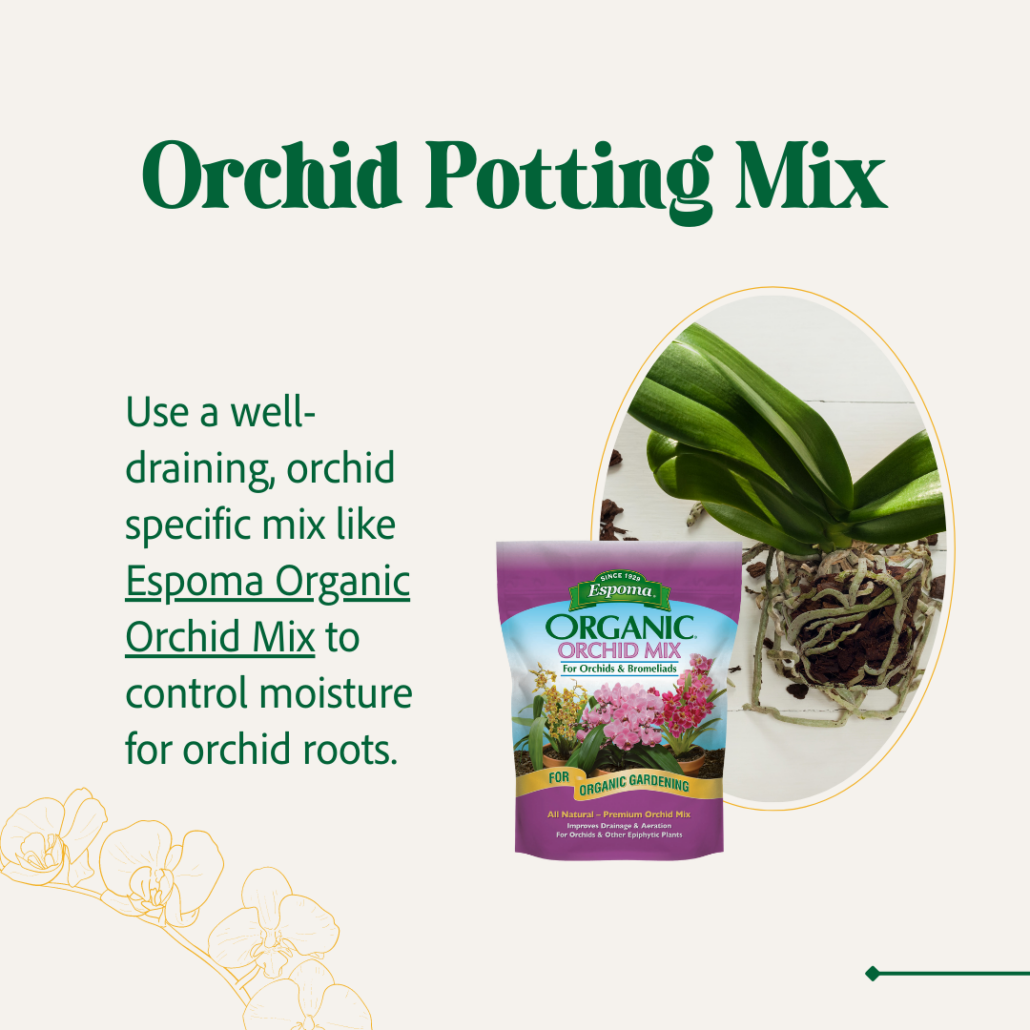
Common Orchid Types
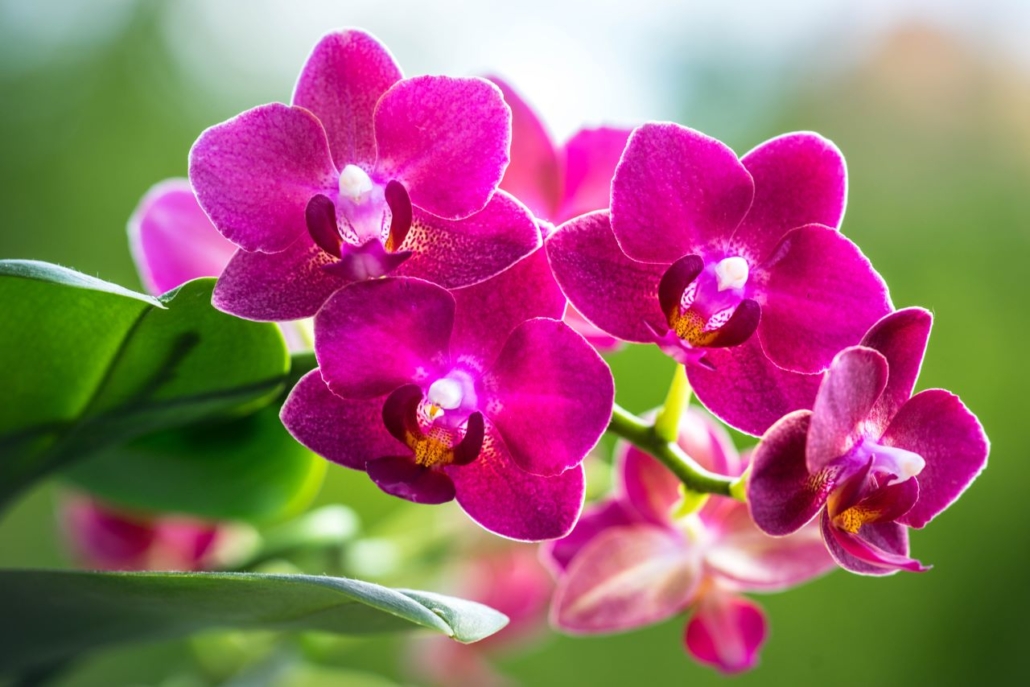


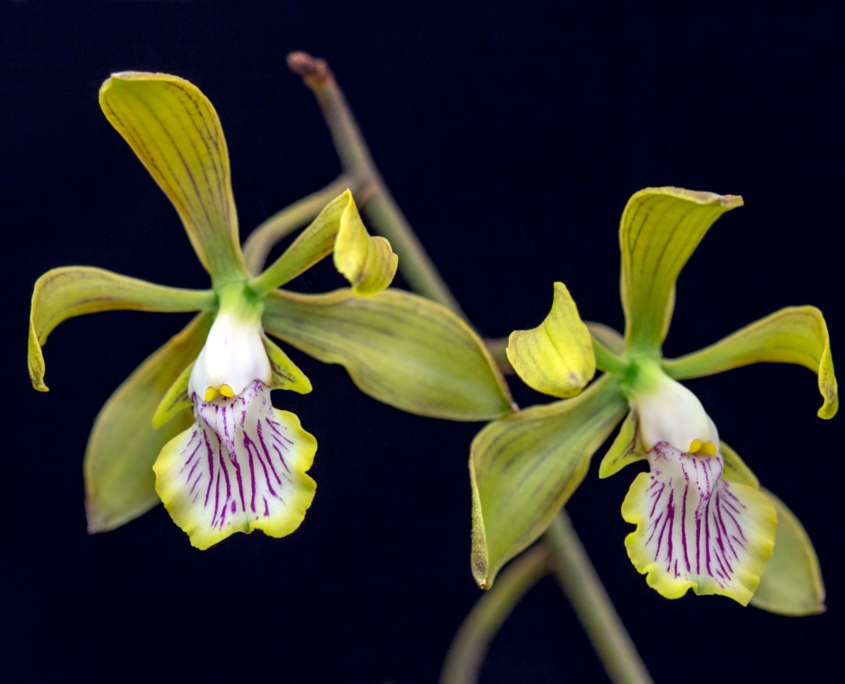
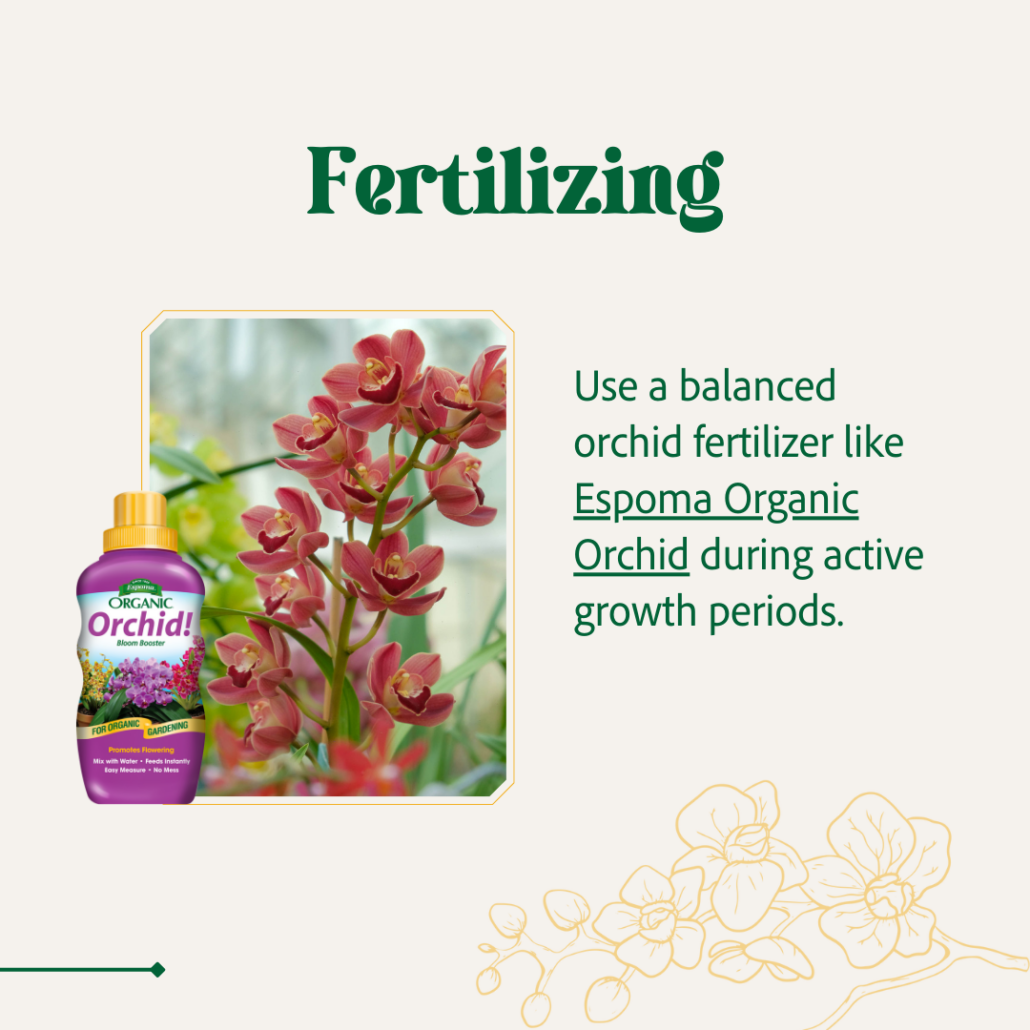
Fertilizer: To Use or Not to Use?
Fertilizing orchids during their active growth periods is beneficial for the beautiful blooms associated with them. A balanced orchid fertilizer like Espoma Organic Orchid! A bloom booster that will do wonders—just make sure not to overdo it! Too much can build up salts and harm the roots.
Myth Busting: Ice Cubes & Level of Difficulty
Myth 1: Ice Cubes are Good for Orchids
Myth! Putting ice cubes on the soil can actually harm your orchid. It’s best to water them thoroughly and let any excess water drain out of the pot. You want to avoid letting the roots sit in standing water.
Myth 2: Orchids are Difficult to Care For
Partially a myth. Here’s the truth: some can be tricky, but most of the orchids you’ll find in stores are specifically selected to be tough and adaptable to indoor conditions. In fact, orchids are often described as plants that like “benign neglect.” You can leave them alone for a while, and they’ll still thrive!
Troubleshooting Orchid Problems
Q: Why is my orchid not blooming?
A: If your orchid isn’t blooming, it might need more light or consistent temperatures.
Q: Why are my orchid leaves turning yellow?
A: If the leaves are turning yellow, you could be overwatering or underwatering. And if you notice mushy or black roots, that might indicate root rot, which can be caused by too much water or poor drainage.
*****
It takes patience, attention, and a willingness to learn to take care of orchids. But it’s totally worth it! Add these plants to your collection, and enjoy their stunning flowers and captivating growth patterns for years to come.
Featured Products:
